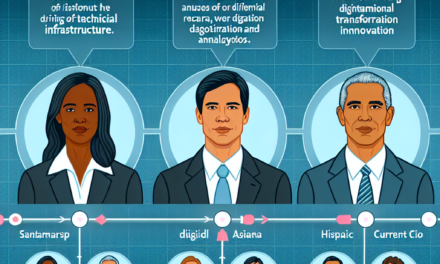New Zealand to Launch Collaborative Digital Health Records
In an era where technology is revolutionizing every aspect of our lives, the healthcare sector is no exception. New Zealand is on the brink of a significant transformation with the upcoming launch of collaborative digital health records. This initiative aims to enhance patient care, streamline healthcare processes, and improve data accessibility across the nation. In this article, we will explore the implications of this initiative, its potential benefits, challenges, and the broader context of digital health records globally.
The Need for Collaborative Digital Health Records
The healthcare landscape in New Zealand has been evolving, with increasing demands for efficient and effective patient care. The traditional paper-based health records system has been a significant barrier to achieving these goals. Collaborative digital health records are designed to address these challenges by providing a unified platform for healthcare providers and patients.
One of the primary reasons for the shift towards digital health records is the growing complexity of patient care. As patients often see multiple healthcare providers, the need for a centralized system that allows for seamless information sharing becomes critical. This is particularly important for managing chronic conditions, where coordinated care is essential for effective treatment.
Moreover, the COVID-19 pandemic has underscored the importance of digital health solutions. The rapid adoption of telehealth services highlighted the need for accessible and comprehensive patient data. Collaborative digital health records can facilitate telehealth consultations by ensuring that healthcare providers have access to complete patient histories, lab results, and treatment plans.
Key Features of Collaborative Digital Health Records
The collaborative digital health records initiative in New Zealand is set to incorporate several key features that will enhance its functionality and usability. These features are designed to ensure that the system is not only efficient but also user-friendly for both healthcare providers and patients.
- Interoperability: One of the most critical aspects of collaborative digital health records is interoperability. This means that different healthcare systems and applications can communicate with each other, allowing for seamless data exchange. Interoperability ensures that healthcare providers can access patient information regardless of where the patient has received care.
- Patient-Centric Design: The new system will prioritize patient engagement by allowing individuals to access their health records easily. Patients will be able to view their medical history, lab results, and treatment plans, empowering them to take an active role in their healthcare.
- Real-Time Updates: Collaborative digital health records will enable real-time updates, ensuring that healthcare providers have the most current information at their fingertips. This feature is particularly important in emergency situations where timely access to patient data can be life-saving.
- Data Security and Privacy: With the increasing concerns about data breaches and privacy violations, the new system will implement robust security measures. This includes encryption, access controls, and regular audits to protect sensitive patient information.
- Analytics and Reporting: The system will also incorporate advanced analytics capabilities, allowing healthcare providers to generate reports and insights from the data. This can help identify trends, improve patient outcomes, and inform public health initiatives.
Benefits of Collaborative Digital Health Records
The implementation of collaborative digital health records in New Zealand is expected to yield numerous benefits for patients, healthcare providers, and the healthcare system as a whole. These benefits extend beyond mere convenience and can significantly impact the quality of care delivered.
One of the most significant advantages is improved patient safety. With a centralized digital record, healthcare providers can access complete and accurate patient information, reducing the risk of medication errors, duplicate tests, and misdiagnoses. For instance, if a patient is allergic to a specific medication, this information will be readily available to all providers involved in their care, preventing potentially harmful prescriptions.
Additionally, collaborative digital health records can enhance care coordination. When multiple providers are involved in a patient’s care, having access to a shared record allows for better communication and collaboration. This is particularly beneficial for patients with chronic conditions who require multidisciplinary care. A study published in the Journal of Medical Internet Research found that improved care coordination through digital health records led to better health outcomes and reduced hospital readmissions.
Furthermore, the initiative is expected to increase efficiency within the healthcare system. By reducing the reliance on paper records and manual data entry, healthcare providers can save time and resources. This efficiency can lead to shorter wait times for patients and more time for healthcare providers to focus on delivering quality care.
Another notable benefit is the potential for enhanced public health monitoring. With a comprehensive digital health record system, public health officials can analyze data trends and identify outbreaks or health issues more effectively. This capability can lead to timely interventions and improved population health outcomes.
Challenges and Considerations
While the launch of collaborative digital health records in New Zealand presents numerous benefits, it is not without its challenges. Addressing these challenges will be crucial for the successful implementation and adoption of the system.
One of the primary concerns is the issue of data privacy and security. As healthcare data is highly sensitive, ensuring that patient information is protected from breaches and unauthorized access is paramount. The system must comply with stringent regulations, such as the Health Information Privacy Code, to safeguard patient data. Additionally, public trust in the system will be essential; if patients do not feel confident that their information is secure, they may be reluctant to engage with the digital health records.
Another challenge is the need for interoperability among existing healthcare systems. New Zealand’s healthcare landscape consists of various providers, each with its own systems and processes. Achieving seamless integration between these systems will require significant investment in technology and infrastructure. Moreover, training healthcare providers to use the new system effectively will be essential to ensure its success.
Resistance to change is another potential hurdle. Many healthcare providers are accustomed to traditional methods of record-keeping and may be hesitant to adopt a new digital system. To overcome this resistance, it will be important to provide adequate training and support, as well as to demonstrate the tangible benefits of the new system.
Global Context and Comparisons
The move towards collaborative digital health records in New Zealand is part of a broader global trend towards digitization in healthcare. Many countries are recognizing the importance of electronic health records (EHRs) in improving patient care and operational efficiency.
For instance, countries like Denmark and Estonia have made significant strides in implementing nationwide digital health records. In Denmark, the use of EHRs has been linked to improved patient safety and reduced healthcare costs. A study found that the implementation of EHRs in Denmark led to a 20% reduction in medication errors.
Similarly, Estonia has developed a comprehensive digital health system that allows citizens to access their health records online. This system has not only improved patient engagement but has also streamlined administrative processes within the healthcare system.
In contrast, some countries face challenges in their digital health initiatives. In the United States, for example, the adoption of EHRs has been uneven, with many providers still relying on paper records. Issues such as high implementation costs, lack of interoperability, and concerns about data privacy have hindered progress.
New Zealand’s approach to collaborative digital health records aims to learn from these global experiences. By prioritizing interoperability, patient engagement, and data security, New Zealand hopes to create a robust system that enhances healthcare delivery while addressing the challenges faced by other nations.
Conclusion
The launch of collaborative digital health records in New Zealand represents a significant step forward in the evolution of healthcare in the country. By addressing the challenges of traditional paper-based systems, this initiative has the potential to improve patient safety, enhance care coordination, and increase efficiency within the healthcare system.
While there are challenges to overcome, such as data privacy concerns and the need for interoperability, the benefits of a collaborative digital health record system are clear. As New Zealand embarks on this journey, it stands to gain valuable insights from global experiences, positioning itself as a leader in digital health innovation.
In summary, the collaborative digital health records initiative is not just about technology; it is about transforming the way healthcare is delivered and experienced. By empowering patients and healthcare providers alike, New Zealand is paving the way for a more connected, efficient, and patient-centered healthcare system.





